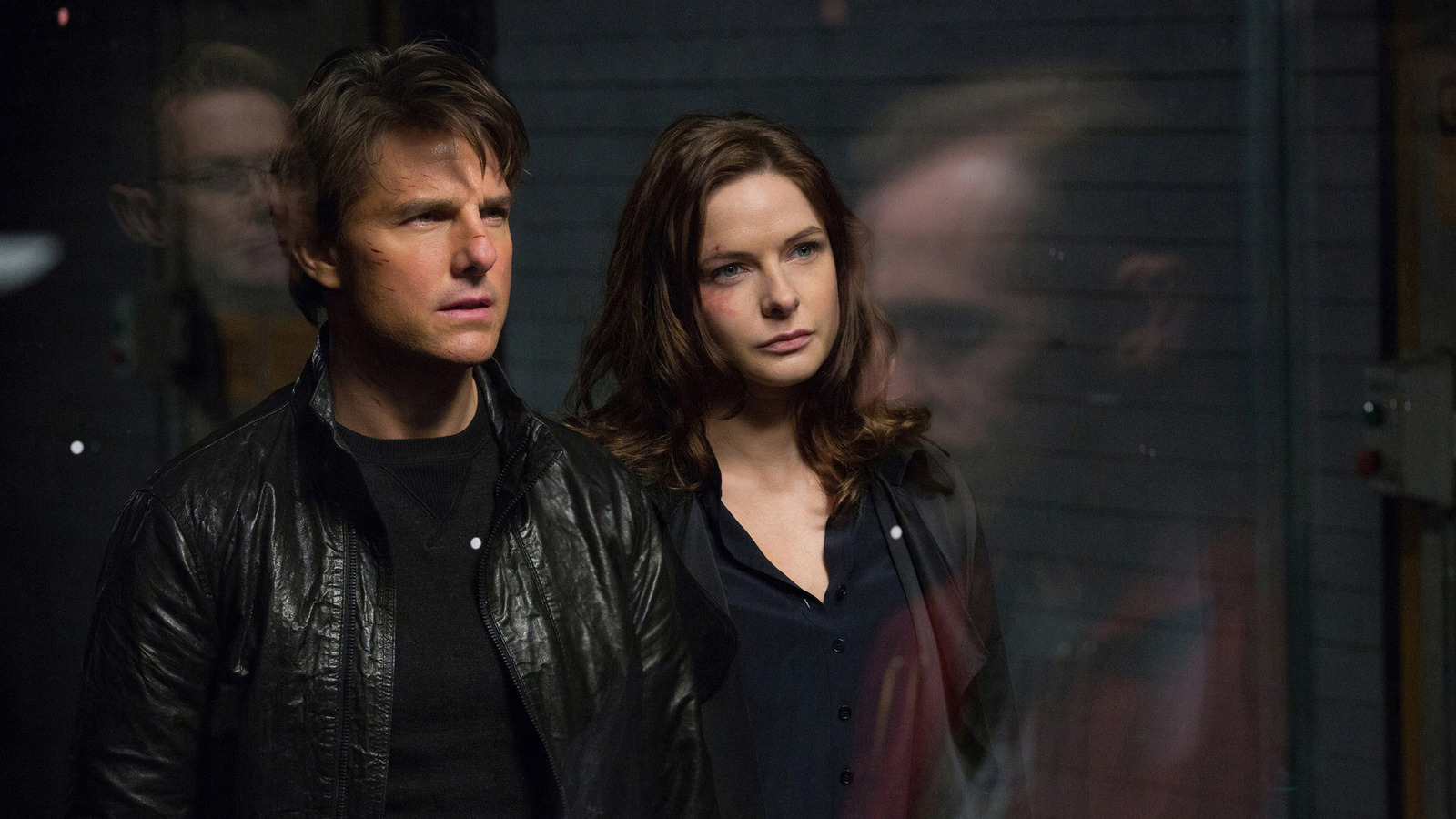
Tom Cruise Revamped the Ending of Mission: Impossible Rogue Nation with a Clever Adjustment
Christopher McQuarrie’s 2015 installment, “Mission: Impossible – Rogue Nation,” stands out not only as the fifth entry in the iconic franchise but arguably the best. What makes it particularly unique is its unconventional approach to action movie storytelling; it kicks off with an astonishing stunt, then culminates in a seemingly mundane sequence of characters sitting around, deliberating on how to defuse a bomb attached to one of their own, all while a villain orchestrates events from afar. Despite this odd structure, the film maintains an ever-increasing level of tension.
Recall the gripping moment early in the film where Tom Cruise performs a jaw-dropping stunt, clinging to the side of a real airplane as it takes off — a breathtaking feat that demands intense focus and physical endurance, complete with custom contact lenses to withstand gale-force winds. If you happened to be running late, you might have completely missed that exhilarating introduction. Yet, even after such an adrenaline-inducing start, “Rogue Nation” deepens its plot with a complex narrative involving Ethan Hunt (Cruise), a clandestine group of terrorists, and the enigmatic Isla Faust, played by Rebecca Ferguson.
Cruise, known for his hands-on involvement in the production of his high-profile films, typically influences various aspects, from storytelling to casting. This was evident during the editing of “Rogue Nation’s” climactic table scene. In a 2022 podcast episode reminiscent of the film’s creative process, both McQuarrie and editor Eddie Hamilton revealed that they struggled to piece together the final moments of the film. Their breakthrough came thanks to Cruise’s insightful suggestion.
The pivotal element? Music. When filmmakers edit a film, they often use temporary soundtracks to gauge how the scenes feel. These temp tracks might be borrowed from other films or classical melodies that evoke the right emotion. But they can be double-edged swords: some filmmakers become overly attached to these scratch scores and unwittingly push composers to replicate them, leading to unoriginal soundscapes.
In the climax of “Rogue Nation,” each segment was effective on its own but created a sense of instability in the final act. After a sequence where Benji (Simon Pegg) is strapped to a bomb, the narrative leads to a thrilling chase at the Tower of London, followed by another tense moment with Ethan trapped in a bulletproof enclosure. McQuarrie sensed that the film had an overabundance of climaxes. It was Cruise’s suggestion that transformed the sequence.
He proposed to simply keep the music playing throughout the entire final act. This single change transformed the cinematic experience. McQuarrie later reflected on Cruise’s insight, stating that initial test screenings felt as though the film had multiple endings. The solution was not to trim the narrative but to enhance the continuous musical score. With Cruise’s recommendation to composer Joe Kramer for a lengthy piece that flowed through the conclusion, the film gained cohesion and intensity, elevating audience engagement.
This adjustment by Cruise proved remarkably effective, solidifying the climax as one of the film’s standout features. It’s a testament to the power of collaboration and intuition in filmmaking, where even a simple suggestion can dramatically enhance the final product.



